Insights into Inertial Sensor Technology
SBG Systems is a leading French supplier of MEMS-based inertial motion sensing solutions. For insights of the future and direction of this niche, MTR reached out to Raphaël Siryani, co-founder of SBG Systems, for his insights.
For those readers not familiar with SBG Systems, please give to us a concise overview of the company, and precisely its position in the subsea industry?
The company provides a wide range of inertial solutions from miniature to high accuracy. SBG Systems products address aerospace, ground, marine and subsea industries with specific features for each market such as subsea enclosures, DVL / INS integrations and delayed heave measurements. Our products are completely designed and manufactured In-house from the IMU to the final fully featured Inertial Navigation System (INS).
With more than 30% of turnover in the marine and subsea industry, SBG Systems has become a major supplier of motion reference units and inertial navigation systems since its creation in 2007.
Looking specifically at the subsea sector in relation to your business, what do you see as the big trends that are driving business today and in the next five years?
The subsea market has some specificities compared to the marine (surface) market. Indeed, for an AUV that either needs an INS for navigation or for surveying tasks, the power consumption as well as the system size has to be taken into account in addition to the required high level of accuracy.
Reducing the power consumption for the navigation system will maximize the mission time thus reducing operating costs. Another example, with a surface vessel, if you just need a low accuracy position, you will basically use a low end GPS receiver that costs a few hundred dollars. For a subsea vehicle such as a ROV that only needs a rough underwater position, you will have to spend thousands of dollars to have a super accurate position.
We think that providing a cost effective solutions for low accuracy underwater navigation is a key point for ROV while for AUV, a small sized, low power but accurate device is a must have. Our last developments have been made with these requirements in mind, and with the Ekinox series we start to address the low cost underwater navigation market.
There is still a long way to go before offering low power, small sized and cost effective INS with gyro compassing that is a mandatory feature to completely cover subsea market needs.
Subsea Science, Defense and Offshore Energy are the big drivers in the subsea sector. Please discuss the importance of each to your business?
For SBG Systems, the offshore market is clearly driving our subsea business. This market is constantly looking at new solutions with increased accuracy or better prices. For this market, the main concern is always the system reliability and availability.
In addition, offshore / energy customers want a straightforward integration with a very responsive support. At SBG Systems, we do our best to provide a very high quality support with free of charge support, updates and improvements.
Subsea science is our second most important market as new technologies enable new research projects. The ratio between the cost, the accuracy, the size and the power consumption is a very important factor for this market.
Finally, the marine defense industry is a promising market for SBG System as the need to offer smaller and lower cost solutions such as divers navigation is more and more important.
In your opinion, what are the top two or three technical drivers that have had the most dramatic impact on your products, your business in the past five years, and why?
Clearly to provide an accurate subsea Inertial Navigation System, you need good gyroscopes and accelerometers. In the last past five years, MEMS technology has dramatically improved and can now easily compete with FOG based gyroscopes on some parameters such as the angular random walk (noise at 1 second) and the bias instability. Low noise and good bias instability are key parameters to provide stable roll / pitch and position measurements that is mandatory for subsea navigation or multi-beam sonars.
In addition, MEMS technology offers very high MTBF as well as lower power consumption that are very useful for surveying applications where the Inertial Navigation System could operate 24 hours per day.
However, MEMS gyroscopes have startup bias and total bias stability (over temperature) that are an order of magnitude greater than good FOGs gyroscopes. For some applications such as gyro compassing, MEMS gyroscopes are still not stable enough, but in almost all other situations this technology offers key advantages over FOG devices.
Next evolution in MEMS inertial sensors will certainly open up new opportunities with decreased size, power consumption and price over they FOGs counterpart.
The subsea market needs most of the time real-time outputs and the computational power is a key parameter to runs very complex mathematical algorithms.
In the last past 10 years, the computational resources of low power microprocessors have dramatically increased. As a result, our latest Ekinox series has enough computational power to run the same algorithms as a desktop computer while consuming less than 1 W.
Staying on the technology theme, are there any emerging or maturing technologies out there today that – when and if they develop as expected – will drive your business further, faster?
Cold Atoms Inertial Sensors seems to be a very promising technology to provide quite cost effective solutions but much more accurate than RLG or FOG devices. In 2016, a British submarine will demonstrate a one-axis accelerometers working on this principle with an improvement of 1,000x over current solutions. There is still a very long way to go before this technology could be used for industrial applications but theoretically, it should enable cost effective subsea navigation in the short term.
Please give us an overview of your typical customer, and specifically, point to how your customers changing needs have driven innovation in your company in recent years.
In the subsea market, our customers are looking at cost effective alternative to address medium accuracy but robust subsea navigation. The typical need is to combine an Ekinox with a DVL, a Depth Sensor and eventually other positioning devices such as USBL. From the beginning of the Ekinox development, we have taken this requirement into account to finally offer a reliable underwater navigation that fill the gap between a basic DVL + magnetic compass solution and a FOG based INS + DVL.
We also provide accurate roll and pitch measurements for the offshore market where large structures need to be monitored to either study fatigue or help operators during the maintenance or the construction. This market has clearly contributed to develop the Ekinox subsea enclosure.
Our miniature IG-500 sensors are used to provide roll, pitch and heading even in magnetic disturb environments for small sized AUVs and ROVs without increasing the cost or the power consumption of the final solution.
We have put a lot of efforts to develop very advanced algorithms that copes with magnetic interferences just for this specific market.
In the marine market, the main application for the Ekinox is multi-beam sonars as we offer a full featured, packaged and cost effective solution with the Ekinox-D (that embeds a dual GPS antenna RTK receiver). To better address this market, we have developed cutting edge algorithms to provide very accurate real-time and delayed heave measurements. The compatibility with existing surveying equipment (sonars, surveying software, …) is also very important for our customers. Finally, the IG-500 (our miniature line of products) is widely used to monitor the sea state with roll, pitch, heading and heave measurements. The small size, low power consumption and price are key parameters for buoys manufacturers.
Almost all the technologies we have developed have been directly driven by our customers needs. Our products all share the same basic principle but to really address a market, you have to know its specificities and to listen at your customers needs to offer a full-featured and straightforward solution.
Can you discuss how SBG has invested in its company, its people and its products in recent years?
SBG Systems has been cofounded by three engineers with one goal: to offer cutting edge inertial technologies. Research and Development lie at the heart of the company with more than 40% of the turnover being invested in products development or to research new technologies. More than one employee over two is closely related to R&D and this effort will continue as the company grows.
In 2009 SBG Systems has introduced its first miniature motion sensor after three years of R&D. Since then, each year new products or technologies have been introduced. In 2013, the Ekinox series was a milestone for the company with a subsea enclosure launched in 2014. In only four years, the accuracy has been improved by a factor of 10 with all famous features needed by the subsea and marine markets such as delayed / real-time heave, DVL, Ethernet, web page configuration, sonar compatibility. We are eager to strengthen our position in the subsea and marine markets in 2014 with the introduction of new exciting products and technologies.
Raphaël Siryani is Chief Marketing Officer and co-founder of SBG Systems. He has been in the Inertial field since 2006 and more specifically in marine / subsea industry since 2009. He has a Master of Science in embedded systems that has allowed him to be in charge of embedded firmware designs, hardware designs and MEMS sensor tests, characterization and calibration.
(As published in the June 2014 edition of Marine Technology Reporter - http://www.marinetechnologynews.com/Magazine)






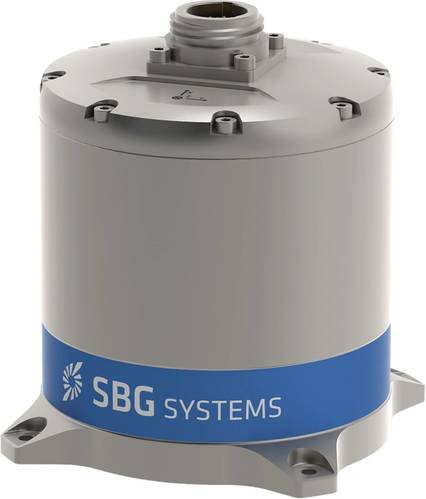


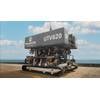

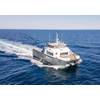
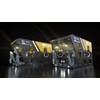
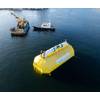





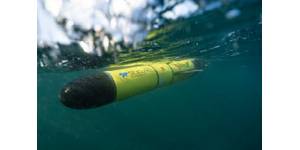
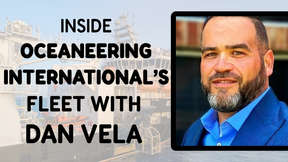
 August 2025
August 2025



